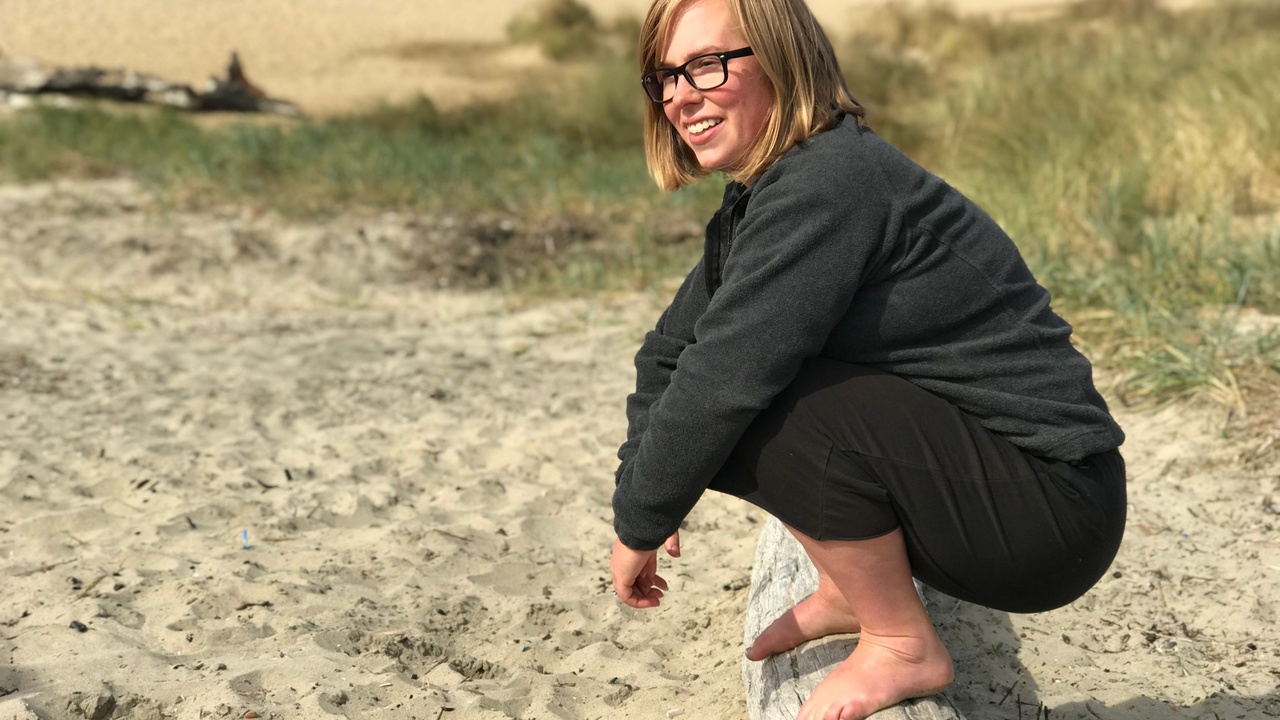How to Achieve Your Deep Squat

Let’s talk squats!
Squatting is what is called a natural movement. A movement that you would see someone do to live their life if we didn’t have all the chairs, cars, running water and modern conveniences.
For many of my clients a squat is a personal goal of there’s, and I love helping them move towards that goal!
The squat also is a movement that requires a lot of moving parts to be lined up in our body to actually happen, a unique combination of mobility and strength.
I wanted to break down a few things you could do to work towards moving into that squat!
Exercise 1. The Calf Stretch

Of all the moving parts for the squat to happen the foundational mobility and strength is where I like to start! From feet and ankle mobility, to the knees and hips being mobile, to the strength of the entire back line, all these little important pieces need to line up to make it happen.
Let’s start with foot and ankle mobility!
Many of our ankles aren’t very flexible and don’t have the ability to dorsiflex, the shape your ankle ideally makes when you’re walking up a hill. If your ankles can’t do this, then that could be one area holding you back from progressing in your squat!
Here’s a CHALLENGE!
Try spending a few minutes a day in a calf stretch, placing the top of your foot one something not too soft and allowing the ankle to be on the ground, bringing that bend and stretch to the ankle, foot and rest of the leg and body!
See how that not only impacts your ankle mobility but how the rest of your body responds!
Exercise 2. Build your butt for Squats!

Building up to a squat is more than just being flexible enough! Squats require a lot of strength in the back of your legs and butt!
A really simple and accessible way to start building strength in the range of motion you already have is by using a chair!
Can you stand up and down really slowly? Like REALLY slowly. For the count of 15 seconds or so each way. Can you get up and down out of that chair without using your hands, but just the strength you have in your legs? Building strength by slowing the move down to take out all the help momentum and gravity give us and relying on muscle strength is an awesome and accessible way to build squat strength!
Can you do this challenge without using your hands?
Exercise 3. Range of motion check!

Let’s play around with our range of motion in a less loaded environment. Squats require a complex combination of both strength and range of motion. This move focuses on the playing around with your range of motion without the heavy load of your entire body weight.
Challenge Move! Try sitting in a chair with your pelvis in neutral (meaning not tucked under, but sitting on your sit bones). Usually, sitting closer to the front edge of the chair helps with this.
Now we’re going to raise the floor for our feet. Can you find a sturdy box, a step stool or yoga blocks to place your feet on. Now check back in with your pelvis. Did raising your feet tuck your pelvis under? Can you gently untuck the pelvis with your feet elevated? If not, try lowering the surface your feet are on and try that position.
Now you relax in this position, enjoying the deeper ranges of motions for your hips, knees and ankles in a less loaded position!
Exercise 4. Let’s combine load and range of motion… with support!

Find a strong support, a beam, door frame, something stable enough for you can hang onto with your body weight.
Stand arms distance away from your support, and holding on with your hands, start moving into a squat position. This support helps carry the load from the weight of your body while allowing you to experience some of the weight.
Check in with your pelvis again, similar to the chair squat, can you keep it from really tucking under as you come into the squat?
Then you get to hang out until you start to feel a bit fatigued, but when you do come out of the squat, try and move slowly, using strength instead of momentum!
Exercise 5. This move is one of my favorites for seeing range of motion gains!

Come onto your forearms and knees, tuck your toes underneath and slowly start shifting your pelvis back towards the back wall.
The most common way to get into this move is to tuck the pelvis under and to really curve the lower back…. But that takes some of the movement away of all our awesome hip, knee and ankle joints.
If you find your pelvis tucking under, back out, and try to back into it again, really focusing on keeping the pelvis in a more neutral place, with the sit bones pointing towards the back wall instead of towards the floor, and stopping when you feel the pelvis start to tuck!
What are you squat goals? If you practice all these moves you can create an accessible practice to move you towards a deeper squat!

